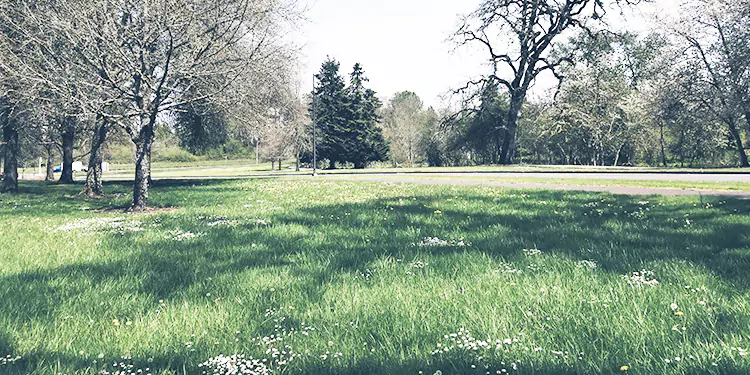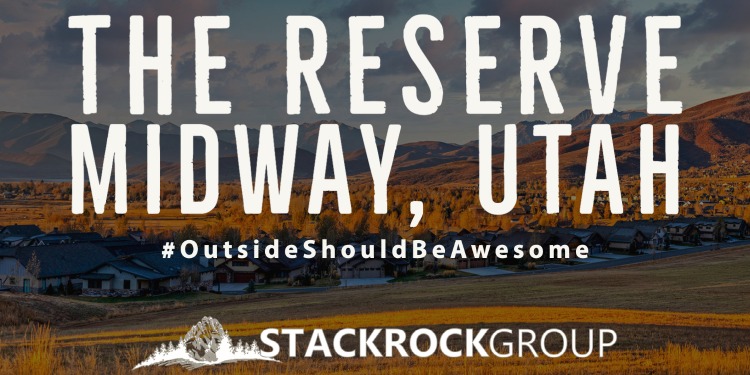
Project Name: HP Inc. Corvallis, Oregon Campus
Location: Corvallis, Oregon
Date Designed: Spring 2018
Date Construction Completed: Fall 2018
Cost: $404,000
Size: 179.34 acres
Landscape Architect: Will Howard, PLA, ASLA Stack Rock Group, Inc., Boise, Idaho
Client: HP Inc. Corvallis, Oregon Campus
Consultants: JJ Howard Engineers McMillen Jacobs Associates Oregon State University Heritage Seedlings
Managed By: JLL and Kellermeyer Bergensons Services
Cost Comparison: TBD
Biome ane Ecoregion: Temperate Broadleaf and Mixed Forests
Context: Located to the northwest of downtown Corvallis, HP Inc. Corvallis, Oregon Campus spans roughly 179 acres. Within the 179.34 acres are 45.77 acres of traditional turf, 17.31 acres of planters, 5.35 areas of non-maintained lawn, 4.82 acres of ponds and 106.09 acres of hardscape with about 20 acres of mature trees on site. The campus was built in the mid-1970s on land that was previously a horse farm.
Site Analysis: The HP Inc. Corvallis, Oregon campus is located on the northwest end of Corvallis on Circle Boulevard between the Willamette River and neighboring farmland. The site has a north aspect with exposure to full sun with prevailing winds from the northwest. The typical annual precipitation is about 42.76 inches with average temperatures in the 60s.
Project Background and History: The HP Inc. Corvallis Campus site had a ‘traditional’ landscape that predominantly featured Kentucky Blue Grass turf that requires an excessive amount of water and maintenance. Recently, HP redesigned their Boise, Idaho campus to reduce their water use. Currently, the Corvallis, Oregon campus consumes most water of all HP campuses globally. Rethinking the way their Corvallis campus uses water on the 179.34-acre campus was necessary to maintain their sustainability standards. The technology campus also looked to reduce the amount of money that they were spending to maintain their landscape, and with this as their primary goal HP Inc. approached Stack Rock Group, who aided in the Boise campus redesign, to consult on ways to reduce HP Inc.’s overall spending on the landscape. From here Stack Rock Group took the lead in designing the overall look of the sustainable landscape by introducing a native grass seed mix to replace the Kentucky Blue Grass, remove the existing shrubs with native perennials and restore the sports fields through an interdisciplinary approach. Stack Rock Group developed this interdisciplinary team of biologists, native seed expert, engineers, Oregon State University, and HP Inc. stakeholders. The team collaborated on ways to reduce the water consumption while maintaining HP Inc.’s platform of a leader in sustainability.
Genesis of Project: In 2016, HP decided they wanted to reduce their spending on watering and maintained their Boise, Idaho campus. The Boise campus converted their turf grass into a native seed mix that was developed by a local rangeland ecologist. This grass mix required only 4 mowing events in a calendar year and required only a fraction of the amount of water. By rethinking the way, the campus was using the turf grass they saw results that were unexpected, but very welcomed. The local bee keeping club on campus saw a 50% increase in their honey production along with the overall biodiversity on campus. After the early success of the Boise campus, HP decided to apply this same approach to the Corvallis, Oregon campus, which is their highest water-use campus in the world.
Sustainable Features: From the beginning of the construction process, environmental sensitivity and reuse coupled with cost and water savings were at the top of the agenda for this campus redesign. The sod that surrounded the campus core had the water turned off to let it die in the spring/summer months. Once this had been achieved, the sod was cut down to about an inch in height where a native seed mix was hydroseeded over the top of the shortened grass. This was done to prevent noxious weeds from growing and to preserve the healthy soils. In addition to this feature, the site includes native perennial plantings that requires a significantly less amount of water to maintain the health and vitality of the flora.
Design, Development and Decision-Making Process: The design team at Stack Rock Group traveled to Corvallis, Oregon to meet with the campus stakeholders and site user representatives. A water specialist was brought in to provide an analysis of the site’s existing irrigation system, which proved to be extremely inefficient with multiple breaks in the irrigation lines, sprinkler heads, and drip irrigation. Repairing the broken sections and upgrading other portions has allowed for an extremely efficient system with a 75% reduction in its baseline water use.
Role of Landscape Architects: The Landscape Architects at Stack Rock Group in Boise, Idaho were contacted to provide input on ways to reduce spending and costs associated with maintaining the campus. Stack Rock Group also brought a team of qualified professionals together to have round-table conversations to ensure the prolonged success of this campus redesign. In addition to design and collaboration, Stack Rock Group took the lead the submittal book to the Sustainable SITES Initiative to become SITES certified.
Program Elements: Some key elements in this project include a native grass seed mix, native perennials, and education on sustainable practices. Additionally, creating a dynamic and diverse team of experts was an imperative element for ensuring the overall success of this project. Without the professionals that created our team weighing in on key elements, the HP Inc. Corvallis, Oregon Campus would not have been as successful as it has proven to be. The creation of a long-term maintenance and performance monitoring plan have been developed to ensure the continual health and vitality of the native plant materials; monitor the overall reduction in water consumption within the landscape; and improve the resilience of the landscape to invasive plants.
Maintenance and Management: The campus is managed by JLL and the maintenance is performed by Kellermeyer Bergensons Services. It is recognized that the native grass will need to be mowed every so often after establishment, but the overall intention is to let the native grasses grow with very little maintenance.
Criticism: Communication of the SITES goals and objectives, contractor involvement, the reasoning and importance behind perusing a SITES certification, and the timeline of completion were all area that we strive to do better with each project we are a part of. Criticism from site users and the public has not been brought to our attention.
Significance and Uniqueness of Project: The landscape redesign of the HP Inc. Corvallis, Oregon Campus is significant for the community, Oregon State University, and for HP Inc. in that it is the SITES certified project in the state of Oregon. This is the second of the HP Inc. campuses to strive to be certified through the Sustainable SITEs Initiative. Based on this success of the Corvallis, Oregon campus landscape redesign, HP Inc. looks forward to developing similar sustainable practices on other campuses of theirs.
Limitations: The Corvallis campus produces a significant amount of industrial wastewater, which is treated to EPA standards before it is released into the sewer system. This originally looked like an awesome opportunity to recycle the water into the landscape. However, as the project started to move forward it became clear that it would be very costly and exceed the time frame that was established.
Generalizable Features & Lessons Learned: Overall, the team has learned multiple lessons throughout the various stages of the HP Inc. Corvallis, Oregon Campus redesign that was applied to the Corvallis campus. With the Corvallis redesign, it was important to develop a time line that can be disseminated to the site users regarding any changes to the landscape. This is something that the team has determined to be a simple yet significant part to the overall cohesive path that a project takes from conception to completion. Getting consensus from all user groups, community members, stakeholders, and professionals has created a landscape that not only serves the people who use the campus, but the local flora and fauna as well.
Future Issues/Plans: The future vitality of the landscape is a potential issue that depends on the maintenance and monitoring of the native seed mix. Although there are no foreseeable future plans for more sustainable elements to be implemented on the HP Inc. Corvallis, Oregon Campus, there is plenty of opportunity for more sustainable installments within the landscape.
Environmental, Social and Economic Benefits: Environmental benefits of the sustainable landscape area that there are reduce emissions from the landscape maintenance equipment, increases in the biodiversity on site, potential for an increase in wildlife, and an increase in soil health. The social benefits of the sustainable landscape are an increase in air quality with the reduced emissions and a functional example for educating the site users on the ways in which native plants can positively change the landscape. The economic benefits that the sustainable landscape provides is that there is an exponential savings in annual costs to maintain the landscape.
Web Sites/Links:
https://theconstructivistonline.com
https://stackrockgroup.com
Photographs:
Project Team: The team that worked on the HP Inc. Corvallis, Oregon Campus redesign span professionals in biology, engineering, construction management, landscape architecture, and landscape care and maintenance. Below is a typical sign in sheet that was present at the integrated design meetings and shows the project team.
Name
Steve Birch
Terah Otero
Erin McNichol
Carmen Weber
Ray Smith
Greg Allington
Mark Schultz
Eric Howard
Awbrey Perin
Will Howard
Lynda Boyle
Kiley Gardiner
Zach Hill
Company
HP Inc.
HP Inc.
HP Inc.
Stack Rock Group
Kellermeyer Bergensons Services
McMillen Jacobs Associates
JLL
JJ Howard Engineers
HP Inc.
Stack Rock Group
Heritage Seedlings
Stack Rock Group
Ecosystem Sciences
Position/Role
Sub Regional Manager
Site Program Manager
Energy & Sustainability Program Manager
SITES Project Coordinator
Landscape Maintenance Contractor
Senior Biologist
Project Manager
Professional Engineer
Site Facilitator
Landscape Architect
Native Plants Specialist
Landscape Designer
Performance Monitoring
Contact for Further Information:
Will Howard, PLA
Stack Rock Group
404 S. 8th St. #154
Boise, ID 83702
+1 (208) 345-0500
will@stackrockgroup.com






